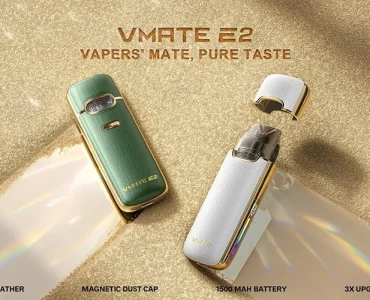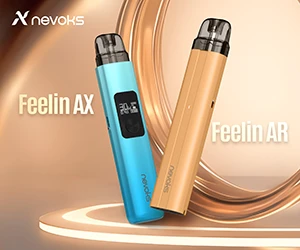As the popular adage goes, ‘bad news sells’. But when this bad news can directly cause harm, one has to question the moral justifications surrounding decisions. Vaping scare stories are nothing new, but in light of Indian health minister Harsh Vardhan being granted an award from the World Health Organisation for banning smoking cessation devices, it seems like ‘the science’ and reality are not aligned.
Science and Reality, the Great Disconnect
One only has to examine the flawed logic behind the WHO’s decision to see a disconnect between perceptions of what vaping is and reality.
What was all the fuss about?
Vardhan was awarded for banning E-cigarettes on World No Tobacco Day.
The problem? Well, according to the WHO’s own website: –
“This yearly celebration informs the public on the dangers of using tobacco… the World Health Organization created World No Tobacco Day in 1987 to draw global attention to the tobacco epidemic and the preventable death and disease it causes.”
It has been scientifically proven that vaping has been highly effective in preventing the use of cigarettes. In fact, the National Health Service of Great Britain advocates E-cig use on its own website as an effective means to stop smoking.
Journalist Tom Chivers likened the decision to ‘getting a Nobel peace prize for banning peace talks’.
Putting ‘the science’ or any debate aside for the moment, one only has to look at very rudimentary facts to see the flaw in the WHO’s logic… There’s a clue in the above-quoted paragraph…
‘The dangers of using tobacco’…
Even the most infrequent of vapers will be able to tell you that electronic cigarettes don’t burn tobacco. The reason many vape is precisely because there is no tobacco.
While electronic cigarettes do contain nicotine, the evidence currently suggests that nicotine does not cause cancer.
Effectively the award was given to someone who banned a device that doesn’t contain tobacco on a day designed to celebrate not using tobacco.
If that seems illogical, that’s because it is.
What’s the harm?
Recent studies and reports have shown that restricting vape use causes an increase in the smoking of traditional (and much more harmful) cigarettes.
Suddenly that award seems somewhat less shiny.
Why is Vaping Getting a Bad Rap?
In truth. There are three real issues: –
- Political grandstanding
- False equivalences
- ignorance about vaping
When you consider that a report on vaping by Public Health England unequivocally states: –
“Best estimates show e-cigarettes are 95% less harmful to your health than normal cigarettes.”
The disconnect is never more apparent.
Let’s take a look at examples of each of the above…
Political Grandstanding
A bill introduced on October 8th, 2019, by Raja Krishnamoorthi (also referred to as the vaping industry’s biggest enemy) sought to reduce the amount of nicotine available in electronic cigarettes and vaping devices.
The harm?
By placing limits on the amount of nicotine in devices, vapers may seek to satisfy their craving by resorting to traditional cigarettes. The CDC website states that cigarettes increase the risk of lung cancer by a factor of 25.
False Equivalences
A wave of anti-vaping sentiment hit its peak during 2019, as a spate of respiratory illnesses was attributed to vaping.
The knee-jerk reaction was to blame vaping as the cause of EVALI, a clever acronym for ‘E-cigarette or vaping use associated lung injury’…
The harm?
It’s two-fold. Even the acronym itself is factually incorrect. It has since been discovered and acknowledged that it wasn’t the act of vaping itself that led to EVALI. Instead, it was what was vaped that led to the problem.
The CDC itself has since stated: –
“National and state data from patient reports and product sample testing show tetrahydrocannabinol (THC)-containing e-cigarette, or vaping, products, particularly from informal sources… are linked to most EVALI cases and play a major role in the outbreak…Vitamin E acetate is strongly linked to the EVALI outbreak.”
Nicotine was not the cause. Vitamin E Acetate, found in substandard, unregulated products, contributed significantly.
One could argue that bills such as the above will limit availability from regulated suppliers, push vaping underground, and limit the quality control that has ensured that EVALI cases are minimal.
The issue is the false equivalence. EVALI sufferers vaped, and therefore all electronic cigarettes are bad.
This is simply bad logic.
The same goes for the false equivalence between vaping and smoking.
Put simply, vaping and smoking are not the same thing. The only similarity is that they both have nicotine as an ingredient. Potatoes, tomatoes, and even eggplants all contain nicotine. Yet, there doesn’t seem to be a politically led push to ban French fries.
Ignorance
When you consider the harms that smoking cigarettes causes year on year, with a yearly death rate of 7.1 million, anything that reduces cigarette use should be seen as a good thing.
Understanding the differences is key to promoting the benefits of vaping over traditional cigarettes. Sadly, many make an automatic association, so they are blind to the facts and will not research any further.
Smoking works by burning tobacco and inhaling the smoke. Herein lies the problem. When tobacco is ignited, it produces a range of harmful chemicals, including ammonia, benzene, lead and carbon monoxide.
Vaping does not rely on burning. Instead, a solution of nicotine (optional), flavoring (also optional), and glycerin are vaporized into an aerosol, which is then inhaled. An E-cigarette user isn’t exhaling smoke; instead, they are exhaling vapor, which is free of all of the harmful compounds mentioned above.
Ignorant opponents may cry ‘aha, but nicotine… Or ‘what about EVALI’?
The response, respectively, is that nicotine does not cause cancer.
Regarding EVALI, when you consider that approximately 8% of Americans vaped in 2019 and the percentage that EVALI accounts for, within that number, it isn’t an issue that has affected the overwhelming majority of vapers. Conversely, when you consider that over 34 million adults smoke and over 16 million Americans live with a smoking-related illness, the numbers should speak for themselves as to which is ‘safer’?
When viewing the above, one can’t fail to see how hysteria, knee-jerk reactions, and false equivalences are harmful. Pushing people away from a relatively safe activity towards one that is confirmed as harmful is dubious and insincere. Granting health awards to individuals who have, in real terms, caused health problems instead of solving them is proof that more awareness and education is needed about the benefits of vaping as opposed to smoking. The granting of such an award only serves to demonstrate how much more balance is needed.











Add comment